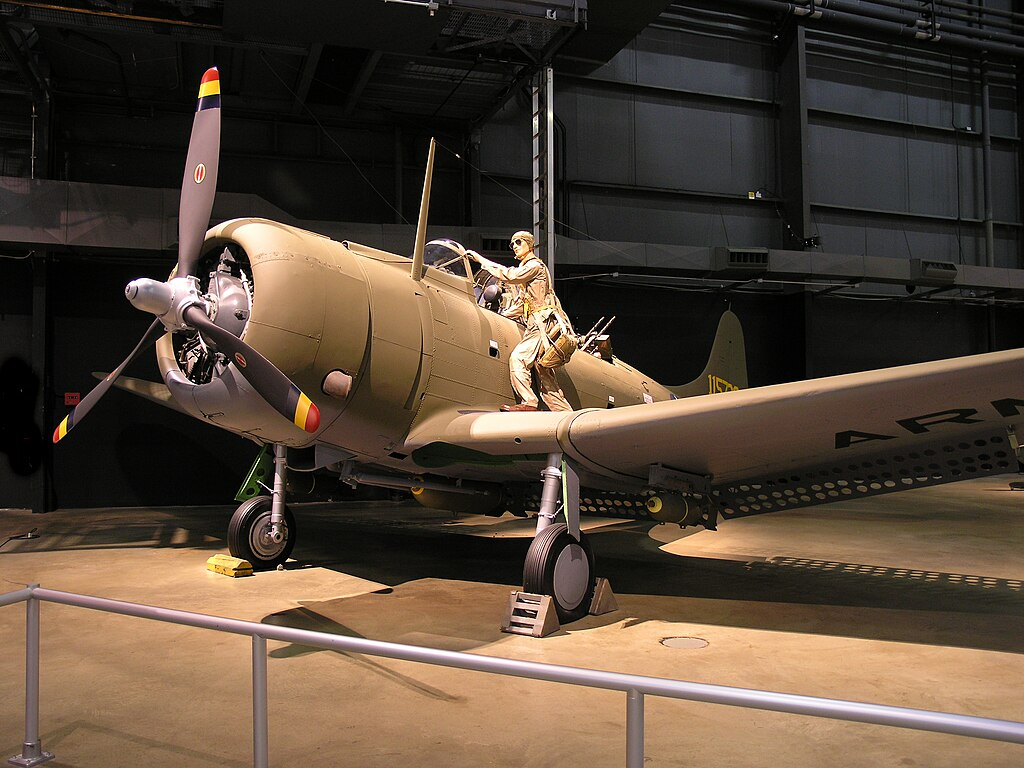
The Battle of Midway is usually recalled as one of the war’s most pivotal moments—a dramatic encounter that turned the tide of the Pacific War. At the center of that success was a workhorse plane that defied the odds: the Douglas SBD Dauntless. It wasn’t streamlined. It wasn’t fast. But in the skilled hands of dogged pilots, it became one of the war’s most potent tools.

Setting the Stage: Why Midway Mattered
Japan had accumulated a run of successes in the Pacific by the summer of 1942, and the Imperial Navy was looking to make its next daring move, taking Midway Atoll. Situated strategically, Midway would provide Japan with a crucial forward base and perhaps compel the U.S. to negotiate for peace on Tokyo’s terms.

But what the Japanese didn’t understand was that American codebreakers were a step ahead. U.S. Navy cryptanalysts broke vital portions of Japan’s messages and verified that “AF”—a codename employed in intercepted messages—reflected Midway. With this knowledge, Admiral Chester Nimitz laid an ambush, situating U.S. carriers between the Japanese fleet and a point just as they began their attack.

The Dauntless Dive Bomber: Tough, Reliable, and Built for the Job
The Douglas SBD Dauntless wasn’t flashy. It was a lumbering, two-seat dive bomber built for precision and survivability. Built by Ed Heinemann and John Northrop, the aircraft had a broad, heavy-duty wing design, perforated dive brakes to control its descent, and a rugged airframe strong enough to endure the intense pressure of vertical bombing runs.

Another highlight feature? Dual controls. In the event the pilot was lost, the rear gunner was able to take over—a luxury and precious safety net then.

Dive Bombing: Precision Over Speed
Dive bombing was a brazen strategy. The pilots would roll their planes into nose-dives—occasionally as steep as 70 or 80 degrees—flying directly at the targets and releasing their bombs from only 1,500 feet over the water. Precise targeting was the objective, and the Dauntless acquitted itself, even in hostile fire. SBD squadrons tended to attack three at a time, synchronizing their dives to saturate enemy defenses and maximize their chances of getting through. It was a risky business, but when successful, the effect was deadly.

Midway: The Dauntless Steals the Show
June 4, 1942. Following the bombing of Midway by Japanese planes, the U.S. counterattacked. Wavestoof SBD Dauntless bombers from carriers Enterprise, Yorktown, and Hornet roared into action. Previous torpedo bomber raids had been lost, but had drawn away most of the enemy’s air defense.

That provided a narrow window for the Dauntless squadrons. Sometime about mid-morning, Enterprise and Yorktown bombers identified the Japanese fleet and hit.

In minutes, three of Japan’s carriers—Akagi, Kaga, and Soryu—were set ablaze. By later that day, the last carrier, Hiryu, had also been eliminated by Dauntless attacks. Four fleet carriers were lost in a single day, shredding the attacking capability of Japan’s fleet. The Dauntless was not completed. During the next two days, it assisted in sinking the heavy cruiser Mikuma and damaging a number of other vessels. The United States lost a great number of courageous airmen during the battle, but the strategic dividend was enormous.

Heroes in the Sky: The Story of Dusty Kleiss
One of Midway’s most renowned pilots was Lieutenant (j.g.) Norman “Dusty” Kleiss. An accomplished flier off the Enterprise, Kleiss dived onto the carrier Kaga from 20,000 feet amidst a bursting hail of flak and scored a direct hit. He returned in the afternoon to hit Hiryu, and days later destroyed Mikuma.

Kleiss was the sole pilot on either side who logged credited hits on three distinct ships in the battle—ships that were all sunk. His deeds captured the sheer bravery and accuracy that made the Dauntless so feared.

Rediscovering History: Wrecks and Restorations
The SBD Dauntless legacy is not merely in museums and books, but also many fathoms down in the Pacific. In April 2025, NOAA expeditionists dived on the wrecked hulks of the USS Yorktown, lost in battle. In their remotely operated vehicles, they found several Dauntless bombers on the ocean floor—some incredibly well-maintained, with markings still visible and even unexploded ordnance intact.

One plane, upside down with a bomb still intact, probably never had a chance to take off. Another, labeled “B5,” is thought to be an Enterprise bomber that crash-landed on Yorktown in the heat of battle. Meanwhile, on land, a dedicated team at the Air Zoo in Michigan is restoring the last known SBD-1, Bureau Number 1612. Crashed in 1942 during a training flight, it now serves as a tribute to both the plane’s engineering and the young aviator, Ensign Herbert Welton McMinn, who died in the accident.

The Dauntless Legacy
Although it was later supplanted by other, more speedy planes such as the SB2C Helldiver, the SBD Dauntless had long since cemented its place in history. It tipped the balance in the Pacific when the Allies most needed it to do so.

Its legacy extends beyond its World War II service. The dive bombing tactics it mastered—precision, coordination, and controlled risk—continue to serve today. And the tale of its pilots, particularly at the Battle of Midway, continues to inspire future generations who learn about one of history’s most dramatic sea battles.
